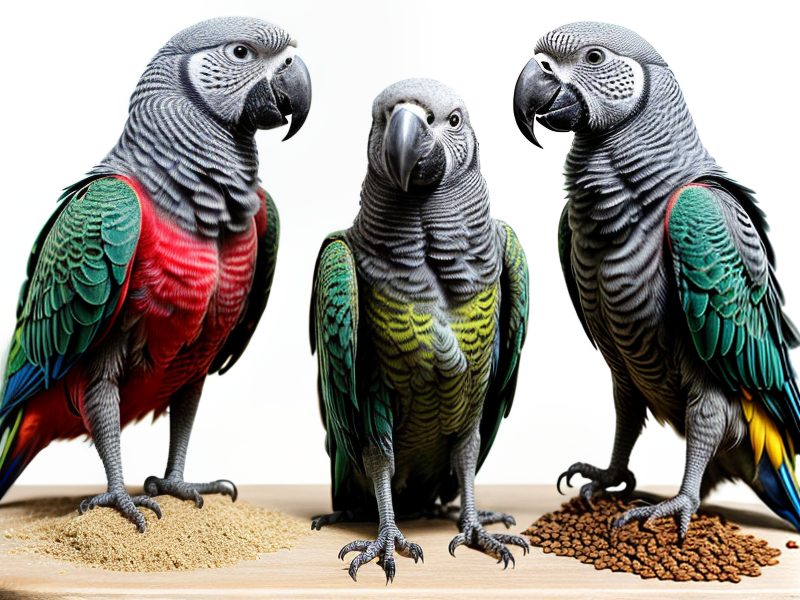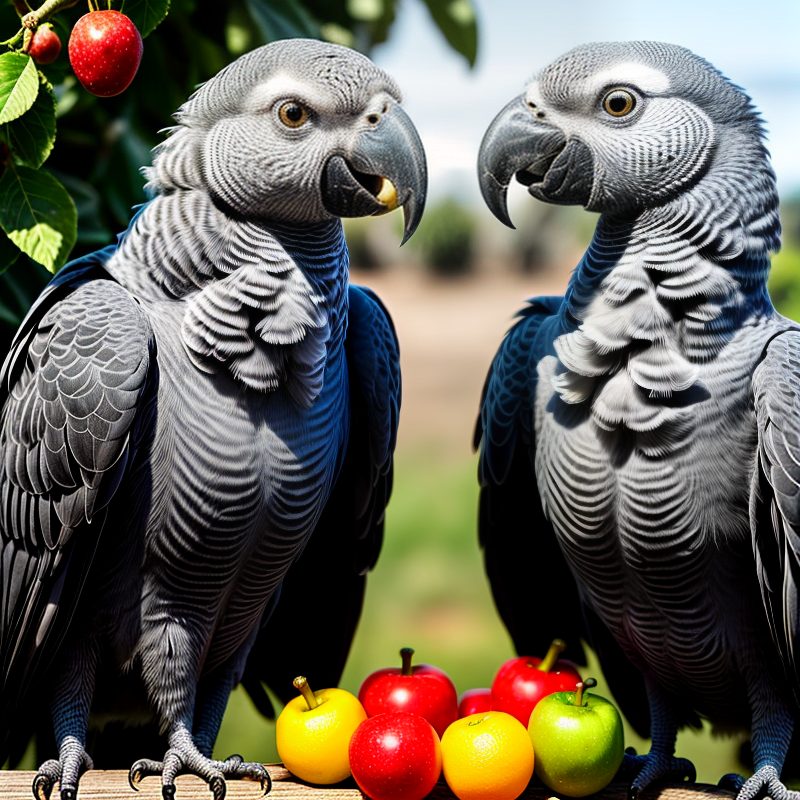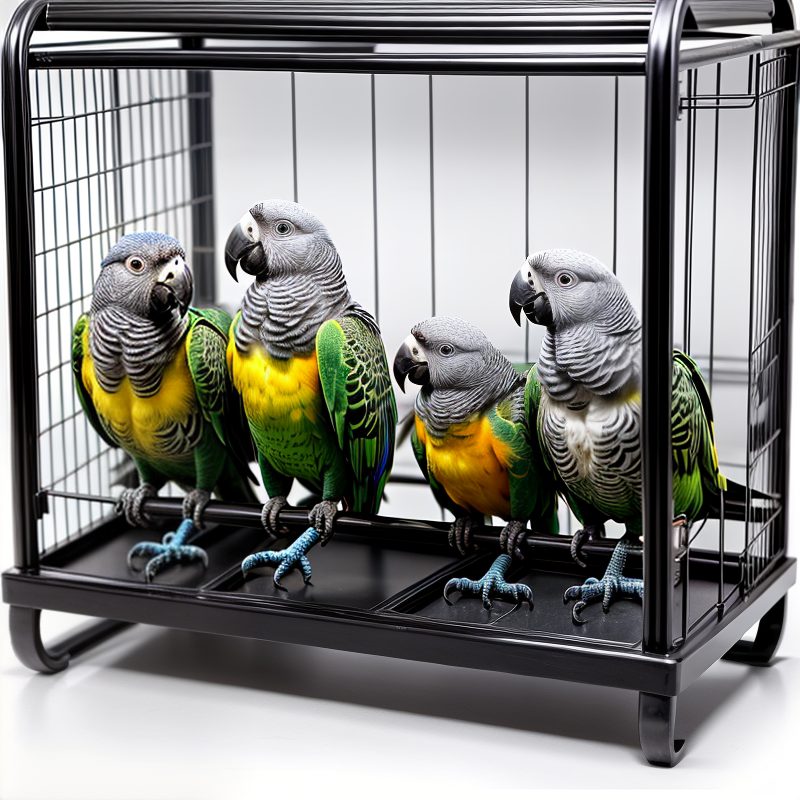Introduction
African Grey Parrots are celebrated for their intelligence, emotional depth, and remarkable ability to mimic human speech. These traits make them highly trainable and engaging companions. However, training an African Grey Parrot requires patience, consistency, and a deep understanding of their behavior and needs. This article provides a comprehensive guide to training African Grey Parrots, covering essential topics such as building trust, basic training techniques, advanced tricks, and addressing common behavioral issues.
Understanding African Grey Parrots
Intelligence and Emotional Capacity
African Grey Parrots possess the cognitive abilities of a young child, with some studies suggesting their mental and emotional capabilities are similar to those of a 5-year-old human. This intelligence allows them to learn complex tasks, understand language, and form deep emotional bonds with their caregivers.
Social Nature
In the wild, African Grey Parrots live in flocks and rely on social interactions for survival. This social nature extends to their relationships with humans in captivity. They thrive on attention and interaction, making socialization and mental stimulation crucial components of their well-being.
Building Trust and Bonding
Establishing Trust
Before beginning any training, it is essential to build a foundation of trust with your African Grey Parrot. Trust is the cornerstone of a successful training relationship and ensures your parrot feels secure and willing to learn.
- Consistency: Spend regular, quality time with your parrot. Establishing a daily routine helps build trust and provides a sense of security.
- Gentle Approach: Approach your parrot calmly and speak in a soft, reassuring tone. Avoid sudden movements or loud noises that might startle them.
- Positive Reinforcement: Use treats, praise, and affection to reward positive behaviors. This reinforces trust and encourages your parrot to seek your approval.
Bonding Activities
Engaging in bonding activities strengthens your relationship with your parrot and sets the stage for successful training.
- Interactive Play: Use toys and games to engage your parrot in play. Interactive toys that challenge their intelligence are particularly effective.
- Mutual Preening: Gently preening your parrot mimics natural bonding behaviors and helps build trust.
- Talking and Singing: Spend time talking and singing to your parrot. This not only builds your bond but also stimulates their vocal abilities.
Basic Training Techniques
Positive Reinforcement
Positive reinforcement is a powerful training technique that involves rewarding desired behaviors to encourage their repetition.
- Treats: Use small, healthy treats as rewards. Common choices include seeds, nuts, and pieces of fruit.
- Praise: Verbal praise and affection are effective rewards. Use a happy, encouraging tone to reinforce positive behaviors.
- Consistency: Be consistent with rewards. Always reward the behavior you want to reinforce, and avoid rewarding unwanted behaviors.
Clicker Training
Clicker training is a popular method that uses a clicker device to mark desired behaviors, followed by a reward.
- Introducing the Clicker: Start by associating the clicker sound with a reward. Click the device and immediately give your parrot a treat.
- Marking Behaviors: Once your parrot associates the clicker with a reward, use it to mark desired behaviors. For example, click and reward when your parrot steps onto your hand.
- Shaping Behaviors: Gradually shape more complex behaviors by breaking them down into smaller steps. Use the clicker to mark and reward each step toward the desired behavior.
Teaching Basic Commands
Step Up
“Step up” is one of the first commands to teach your African Grey Parrot and forms the basis for many other behaviors.
- Present Your Hand: Place your hand in front of your parrot and gently press your finger against their lower chest.
- Give the Command: Say “step up” in a clear, calm voice.
- Reward: When your parrot steps onto your hand, immediately reward them with a treat and praise.
Step Down
“Step down” is another fundamental command that teaches your parrot to move from your hand to a perch or other surface.
- Present the Perch: Hold your parrot at the level of the perch or surface where you want them to step down.
- Give the Command: Say “step down” in a clear, calm voice.
- Reward: When your parrot steps down onto the perch, immediately reward them with a treat and praise.
Recall Training
Recall training teaches your parrot to come to you when called, enhancing their safety and your bond.
- Start Close: Begin by calling your parrot from a short distance. Use a specific command, such as “come” or “here.”
- Reward: When your parrot comes to you, reward them with a treat and praise.
- Increase Distance: Gradually increase the distance between you and your parrot as they become more confident with recall.
Advanced Training and Tricks
Talking and Mimicking
African Grey Parrots are famous for their ability to mimic human speech. Teaching them to talk involves patience and repetition.
- Choose Simple Words: Start with simple, frequently used words such as “hello” or “goodbye.”
- Repetition: Repeat the chosen words consistently in your daily interactions with your parrot.
- Positive Reinforcement: Reward your parrot when they attempt to mimic the words. This encourages them to repeat and refine their speech.
Trick Training
Trick training provides mental stimulation and strengthens the bond between you and your parrot.
- Waving: Teach your parrot to wave by gently lifting their foot and giving the command “wave.” Reward them when they lift their foot on command.
- Spinning: Hold a treat in front of your parrot and slowly move it in a circle. Give the command “spin” and reward them when they follow the treat in a complete circle.
- Target Training: Use a target stick or pointer to teach your parrot to touch the target with their beak. Reward them for touching the target, then use it to guide them in performing various tricks.
Addressing Common Behavioral Issues
Biting
Biting is a common issue that can be addressed through understanding and patience.
- Identify Triggers: Observe your parrot to identify what triggers biting behavior. Common triggers include fear, frustration, or overstimulation.
- Avoid Reinforcement: Do not react dramatically to bites, as this can reinforce the behavior. Instead, calmly remove your hand and redirect their attention.
- Positive Reinforcement: Reward gentle interactions and avoid rewarding aggressive behavior. Consistency is key in reducing biting incidents.
Screaming
Excessive screaming can be a sign of boredom, attention-seeking, or distress.
- Identify the Cause: Determine the underlying cause of the screaming. Address issues such as lack of stimulation, loneliness, or environmental stressors.
- Ignore Negative Behavior: Do not respond to screaming with attention, as this can reinforce the behavior.
- Reward Quiet Behavior: Reward your parrot for quiet, calm behavior. Use treats, praise, and attention to reinforce positive behaviors.
Feather Plucking
Feather plucking can result from stress, boredom, or health issues.
- Veterinary Check-Up: Ensure your parrot is healthy by consulting a veterinarian to rule out medical causes.
- Environmental Enrichment: Provide a stimulating environment with toys, foraging opportunities, and social interaction.
- Reduce Stress: Minimize stressors in your parrot’s environment. Establish a consistent routine and provide a calm, secure living space.
Enrichment and Socialization
Mental Stimulation
Providing mental stimulation is essential for the well-being of African Grey Parrots.
- Toys: Offer a variety of toys that challenge your parrot’s intelligence and curiosity. Rotate toys regularly to maintain interest.
- Foraging: Encourage natural foraging behavior by hiding treats and food in toys or around their environment.
- Training: Regular training sessions provide mental stimulation and strengthen the bond between you and your parrot.
Social Interaction
Social interaction is vital for African Grey Parrots’ emotional health.
- Quality Time: Spend quality time with your parrot daily. Engage in activities such as talking, playing, and training.
- Socialization with Other Birds: If possible, provide opportunities for your parrot to interact with other birds. This can be through supervised playdates or aviary setups.
- Family Involvement: Encourage family members to interact with your parrot, promoting socialization and preventing over-dependence on a single person.
Conclusion
Training African Grey Parrots is a rewarding experience that enhances their quality of life and strengthens the bond between you and your feathered companion. By understanding their intelligence, social nature, and emotional needs, you can effectively teach them a range of behaviors and tricks. Patience, consistency, and positive reinforcement are key to successful training. Addressing behavioral issues with empathy and understanding ensures a harmonious relationship with your parrot.
Whether you are teaching basic commands, advanced tricks, or simply building trust, the journey of training an African Grey Parrot is filled with opportunities for mutual growth and joy. As you embark on this journey, remember that each parrot is unique, and adapting your approach to suit their individual personality and needs will yield the best results. With dedication and love, you can unlock the full potential of your African Grey Parrot, creating a lifelong bond and a happy, well-adjusted companion.







